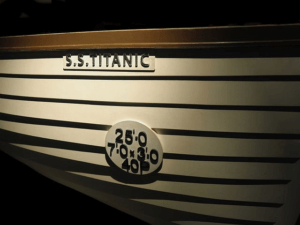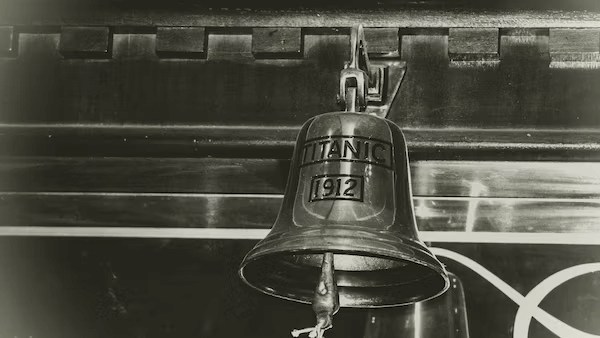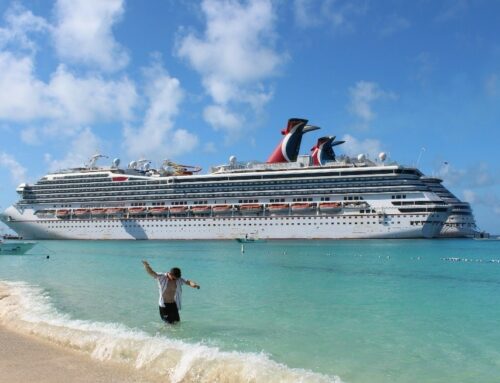111 Years Ago: the TITANIC Tragedy and the Limitation of Liability Act

On April 15, 1912, the world was shaken by the sinking of the R.M.S. TITANIC, the largest ship in the world at that time. The disaster claimed the lives of 1,517 people, including passengers and crew, and caused almost-complete damage to the property. In the aftermath of the tragedy, the owners of the Titanic, the White Star Line, sought to limit their liability through a legal case filed in accordance with the Litmits of Liability laws in place at that time.
The case, known as “In the Matter of the Petition of the Oceanic Steam Ship Company, Limited, for Limitation of its Liability as owner of the steamship TITANIC,” generated many court papers, pieces of evidence, depositions from surviving passengers, and claims of survivors and representatives of deceased passengers. The documents contained firsthand accounts of the sinking in dramatic detail, providing a valuable historical record of the disaster.
In the petition, the White Star Line claimed that the collision was due to an “inevitable accident.” The Titanic‘s liability was governed by the doctrine of the 1851 “Act to limit the Liability of Ship-Owners, and for other Purposes,” which was designed to encourage shipbuilding and trade by minimizing the risk to shipowners when disasters occurred at sea. Under this law, maritime companies were not liable for any loss of life, property, or injury in cases of unavoidable accidents. If it could be proved that the captain and crew made an error that led to loss, but the ship’s owners were not aware of it, the company’s liability was limited to the total of passenger fares, the amount paid for cargo, and any salvaged materials recovered from the wreck.
As a result, the 712 survivors and the families of the 1,517 dead would be entitled to only a total of $91,805: $85,212 for passengers, $2,073 for cargo, and a $4,520 assessment for the only materials salvaged from the Titanic, the recovered lifeboats. Those claiming damages would have to prove that the owners of the Titanic were aware of the factors that caused the Titanic‘s losses before they could recover a higher amount. The law would remove the statutory limits on the company’s liability if the claimants could prove that the captain and crew were negligent, AND that the Titanic‘s owners had knowledge of this fact.
White Star filed its petition, followed by notices placed in the New York Times between October 1912 and January 1913, to inform those who had claims for damages to provide proof by April 15, 1913. Hundreds of claims were made worldwide, totaling $16,604,731, and were divided into four categories: Schedule A: Loss of Life, Schedule B: Loss of Property, Schedule C: Loss of Life and Property, and Schedule D: Injury and Property.
 The claims contained in the documents reveal the experiences of survivors of the Titanic disaster, many of whom had lasting traumas. For example, Anna McGowan of Chicago, Illinois, missed getting onto a lifeboat before they were lowered, forcing her to jump from the Titanic and into a lifeboat. Her claim states that she sustained permanent injuries from the fall, shock, and frostbite, leaving her unable to provide for herself. Patrick O’Keefe of Ireland also jumped overboard to save his life, and was forced to wait in the cold Atlantic water on a small raft for hours before being rescued.
The claims contained in the documents reveal the experiences of survivors of the Titanic disaster, many of whom had lasting traumas. For example, Anna McGowan of Chicago, Illinois, missed getting onto a lifeboat before they were lowered, forcing her to jump from the Titanic and into a lifeboat. Her claim states that she sustained permanent injuries from the fall, shock, and frostbite, leaving her unable to provide for herself. Patrick O’Keefe of Ireland also jumped overboard to save his life, and was forced to wait in the cold Atlantic water on a small raft for hours before being rescued.
Bertha Noon of Providence, Rhode Island, filed a claim for $25,000 in compensation for injuries she sustained after being shoved onto a lifeboat during the evacuation process. Her injuries included an “injured back and spine, severe nervous shock, a misplaced womb, and recurring congestion in her head and chest.”
Other claims were made for property loss. Among the more notable items lost were Margaret “Molly” Brown’s three crates of ancient models destined for the Denver Museum, Col. Archibald Gracie’s documents concerning the War of 1812, and over 110,000 feet of motion picture film owned by William Harbeck. The most valuable individual item lost in the sinking was H. Bjornstrom-Steffanson’s four-foot-by-eight-foot oil painting La Circasienne Au Bain by Blondel, valued at $100,000.
The aftermath of the disaster saw a flurry of legal action, with claimants seeking compensation for their losses. The Schedule A claims filed by family members for loss of life paint a vivid and tragic picture- one claim filed by Finnish immigrant John Panula, describes losing his wife and four children in the tragedy. He had been preparing to reunite with his family in Pennsylvania when tragedy struck.
The claims for losses also reveal the stark class differences in the value assigned to human life. While some widows asked for only a few hundred pounds, others sought millions of dollars in compensation. Irene Wallach Harris, the widow of Broadway producer and theater owner Henry B. Harris, was one such claimant, seeking $1 million total.
Many claimants wanted to hold the White Star Line responsible for the disaster, arguing that the crew had received wireless messages about the presence of icebergs but failed to act on the information. They also blamed the company for not properly training the crew for evacuation, leading to the launching of partially filled lifeboats and further loss of life. Additionally, the fact that the managing director of the White Star Line, J. Bruce Ismay, was on board the Titanic led many claimants to assert that the company should be held liable.
After much legal wrangling, the case made its way to the U.S. District Court for the Southern District of New York in June 1915. The Supreme Court had already ruled in favor of the British owners of the White Star Line, finding that the laws of the United States should be applied to claims of losses from the Titanic sinking. An out-of-court settlement was reached in December 1915, with all claimants receiving a total payout of $665,000, which comes out to an average of $483.36 per death. However, since it was an out-of-court settlement, there is no public record of how the money was divided among the claimants.
Eventually, a final decree was signed by Judge Julius M. Mayer in July 1916, which held the White Star Line guiltless of any wrongdoing and not liable for any loss, damage, injury, destruction, or fatalities. The settlement and final decree brought a legal end to the Titanic disaster, but it did little to ease the pain and suffering of those who lost loved ones in the tragedy. The sinking of the Titanic remains one of the most tragic events in maritime history, and its legacy continues to be felt to this day.
 We at the Herd Law Firm, PLLC, are proud to fight for mariners and passengers of all kinds in all types of personal injury and death claims, and never waver in our commitment to help these victims and their families in seeking the assistance and compensation they so need and deserve.
We at the Herd Law Firm, PLLC, are proud to fight for mariners and passengers of all kinds in all types of personal injury and death claims, and never waver in our commitment to help these victims and their families in seeking the assistance and compensation they so need and deserve.
(Read the original documents here: https://www.paperlessarchives.com/Titanic-court-documents.html)







